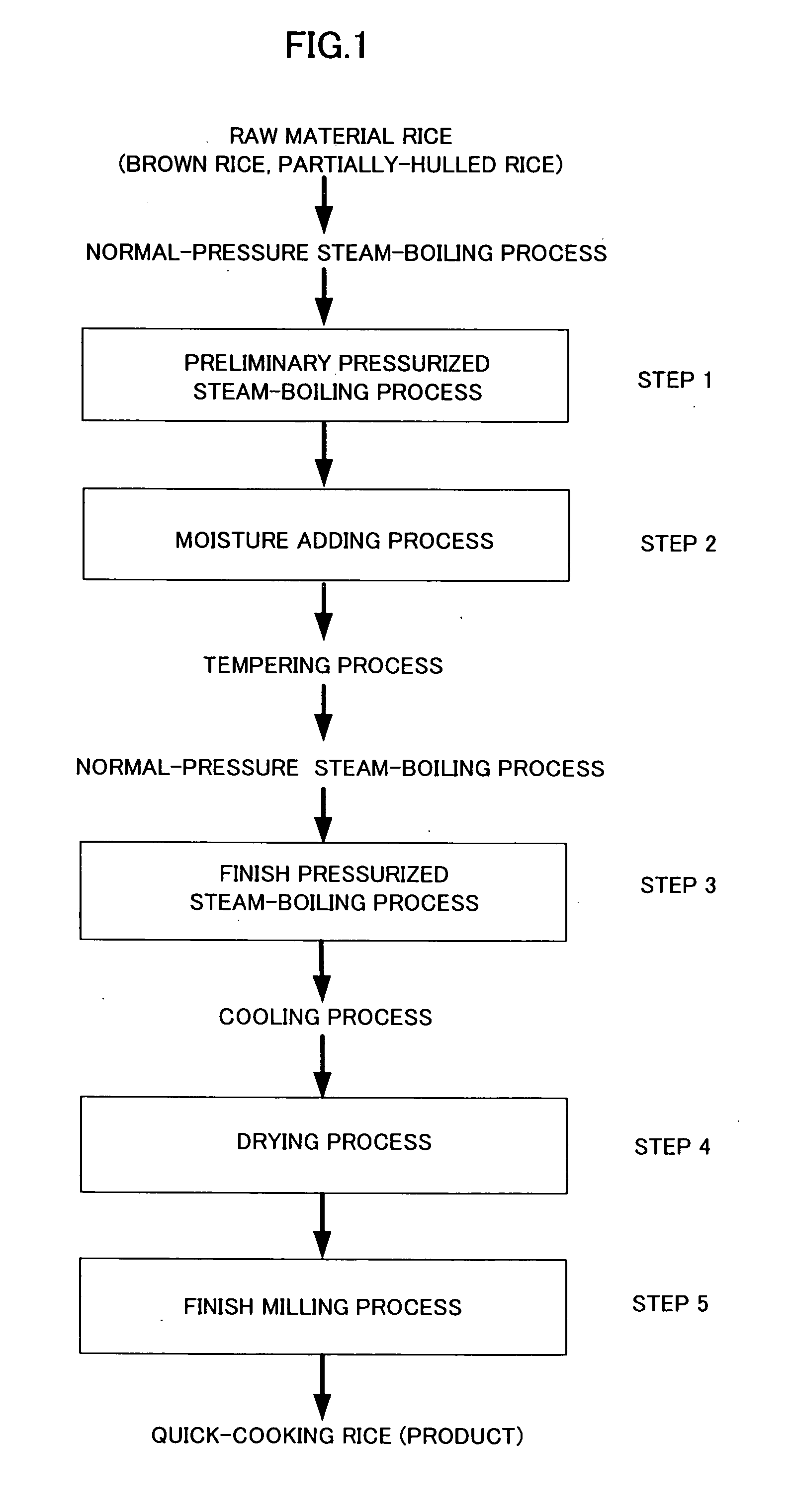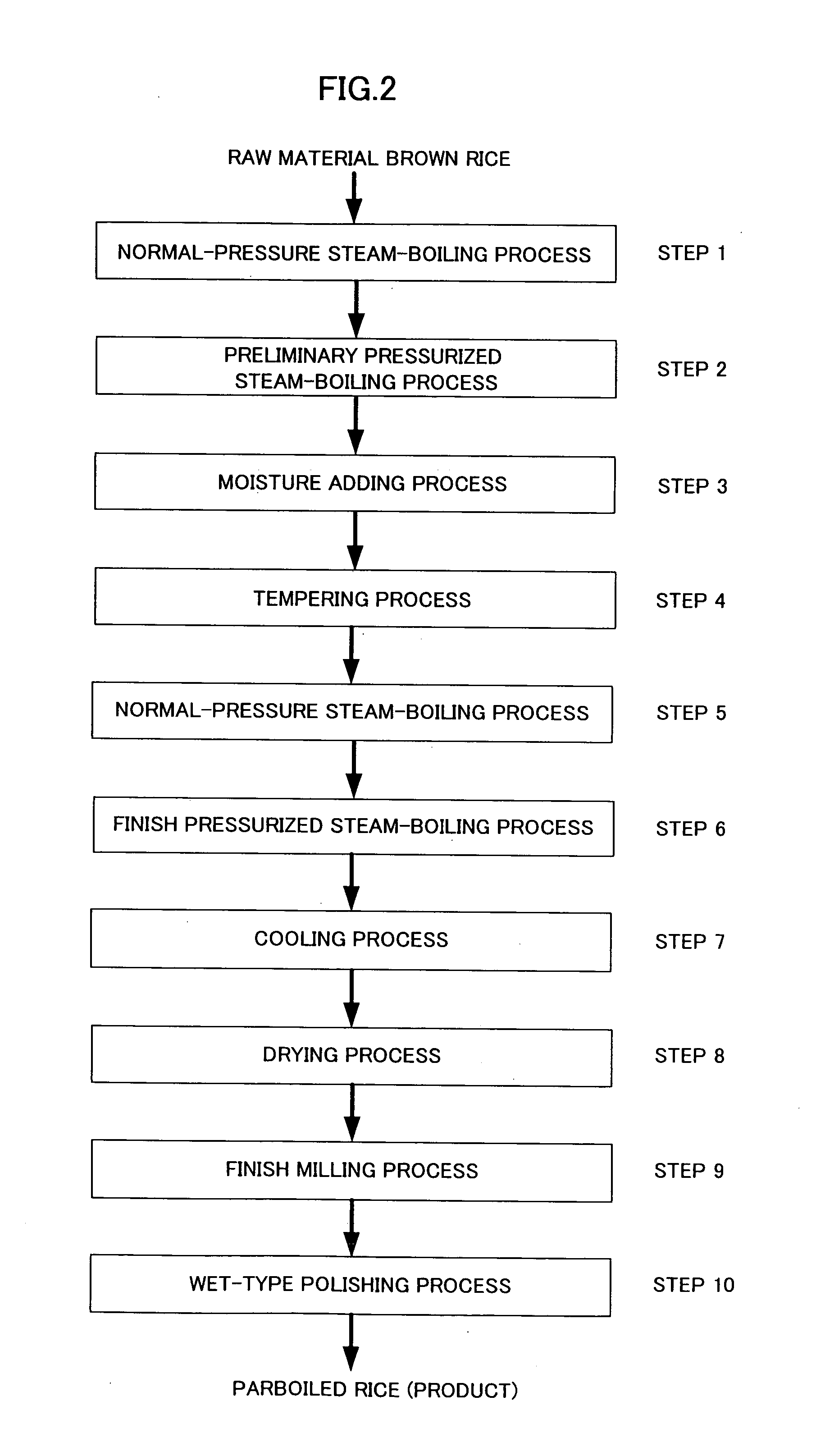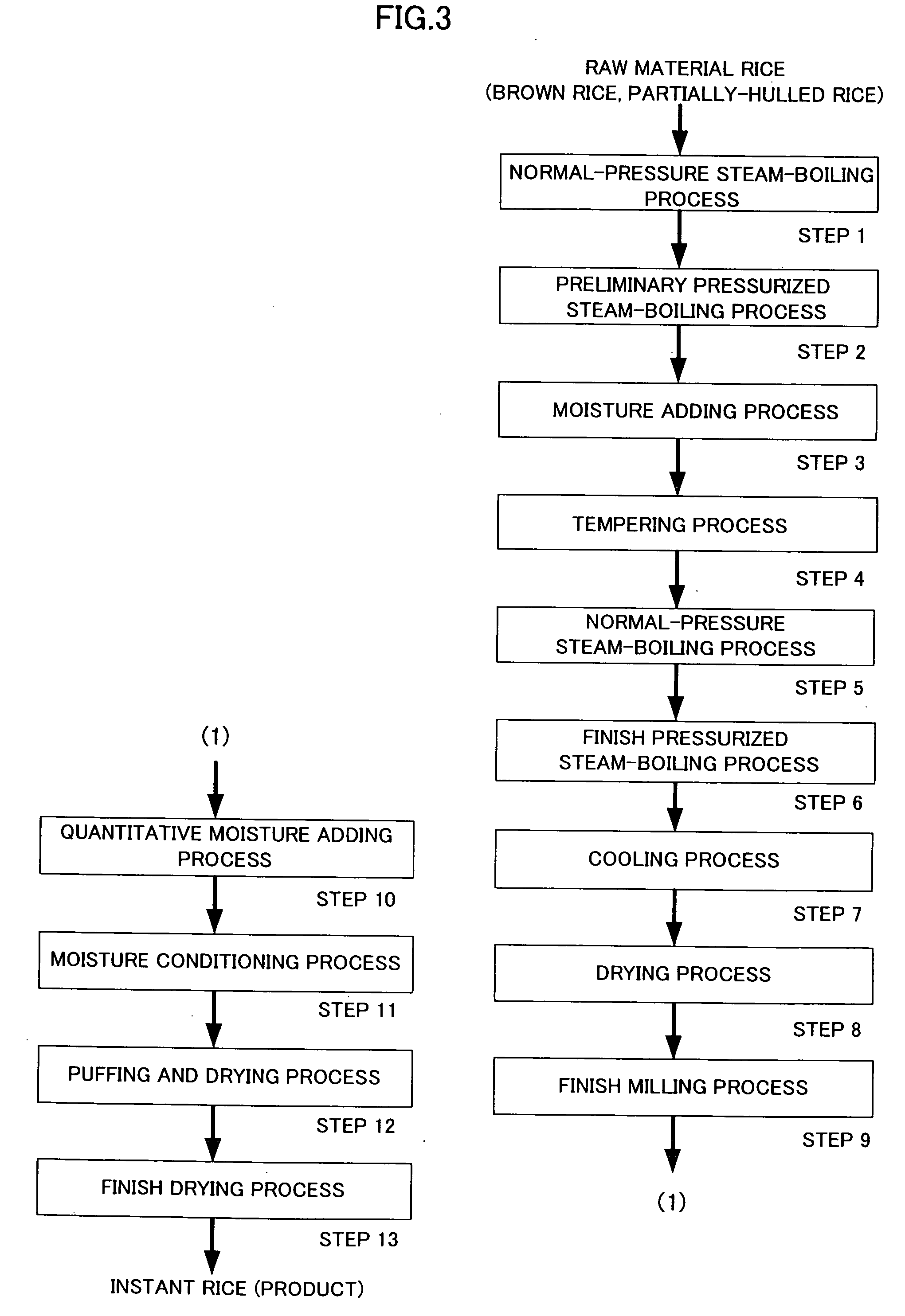Method for producing quick-cooking rice and quick-cooking rice produced by the method
a technology of quickcooking rice and method, which is applied in the field of method for producing quickcooking rice and quickcooking rice, can solve the problems of long time disadvantageously required for adding moisture, cracks may occur on the surface of rice grains, and achieve excellent outer appearan
- Summary
- Abstract
- Description
- Claims
- Application Information
AI Technical Summary
Benefits of technology
Problems solved by technology
Method used
Image
Examples
first embodiment
Method of Producing Parboiled-Rice (First Embodiment)
[0047]FIG. 2 is a flow of producing parboiled rice in the present invention.
[0048]Long-grain or medium-grain brown rice is used as a raw material.
[0049]Step 1 (Normal-Pressure Steam-Boiling Process)
[0050]This process is a normal-pressure steam-boiling process in which raw material brown rice is steam-boiled in a state at normal pressure to be heated (preliminarily heated) in preparation for the next process. FIG. 4 depicts a normal-pressure steam-boiling apparatus 1 for use in the normal-pressure steam-boiling process. The normal-pressure steam-boiling apparatus 1 has the inside enclosed with a machine wall 2 where rotary drums 3 and 4 each in a cylindrical, polygonal shape with a porous wall are disposed in a horizontal orientation so that they have a vertical relation with each other. The upper horizontally-oriented rotary drum 3 is disposed so as to be tilted downward from a supply side at one end to a discharge side at the oth...
second embodiment
Method of Producing Instant Rice (Second Embodiment)
[0099]FIG. 3 is a production flowchart of a method of producing instant rice in the present embodiment.
[0100]Step 1 to step 9 are approximately similar to those in the method of producing parboiled rice described above. In the following, step 10 to step 13 unique to the method of producing instant rice is described in detail.
Step 10 (Quantitative Moisture Adding Process)
[0101]In the quantitative moisture adding process, moisture is further added to the rice grains (alpharized milled rice) discharged in the preceding finish milling process to increase the moisture content. In the quantitative moisture adding process, the same mechanical facility described at step 3 (moisture adding process) can be used. Although detailed description is omitted, with quantitative spraying of shower water from the shower spray nozzle 23a, the moisture adding process is performed until the moisture content of the rice grains becomes within a range of 4...
PUM
 Login to View More
Login to View More Abstract
Description
Claims
Application Information
 Login to View More
Login to View More - R&D
- Intellectual Property
- Life Sciences
- Materials
- Tech Scout
- Unparalleled Data Quality
- Higher Quality Content
- 60% Fewer Hallucinations
Browse by: Latest US Patents, China's latest patents, Technical Efficacy Thesaurus, Application Domain, Technology Topic, Popular Technical Reports.
© 2025 PatSnap. All rights reserved.Legal|Privacy policy|Modern Slavery Act Transparency Statement|Sitemap|About US| Contact US: help@patsnap.com



